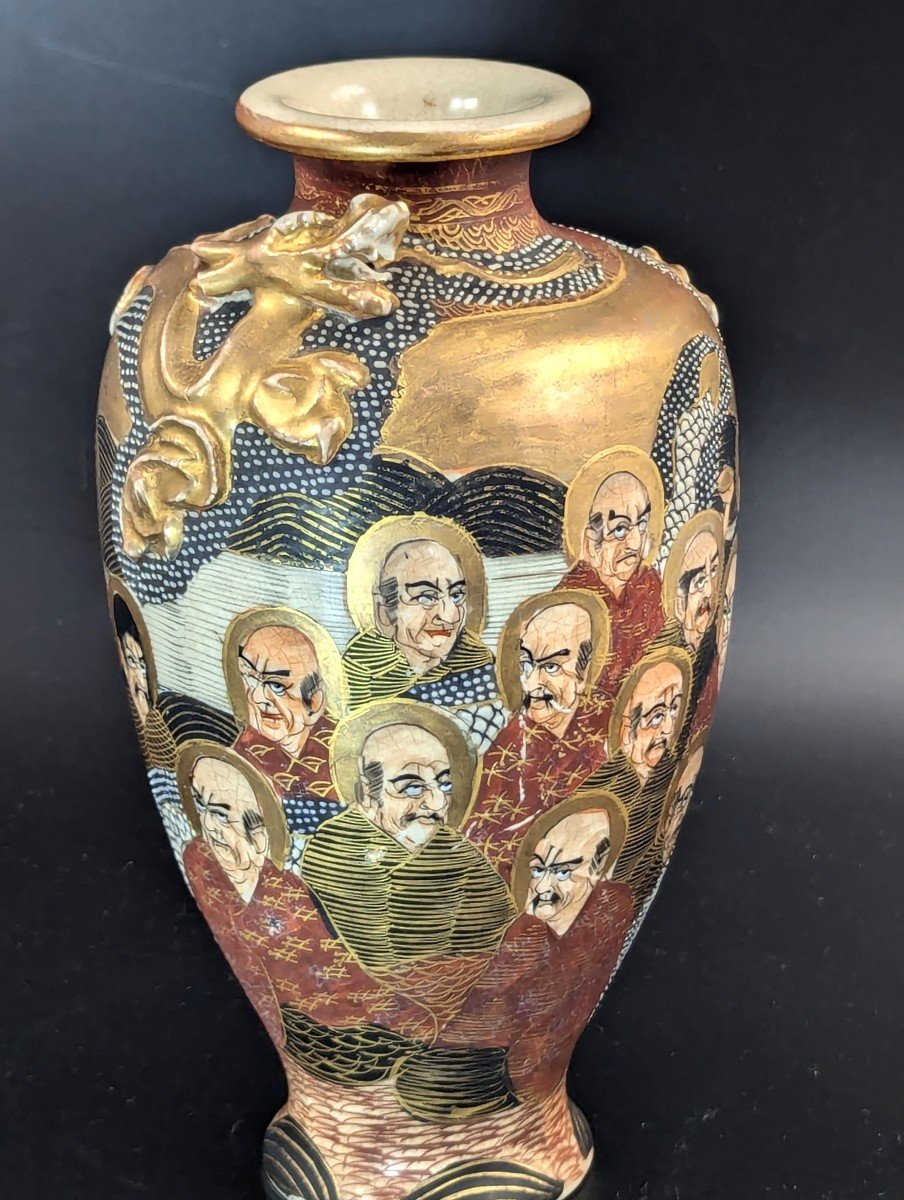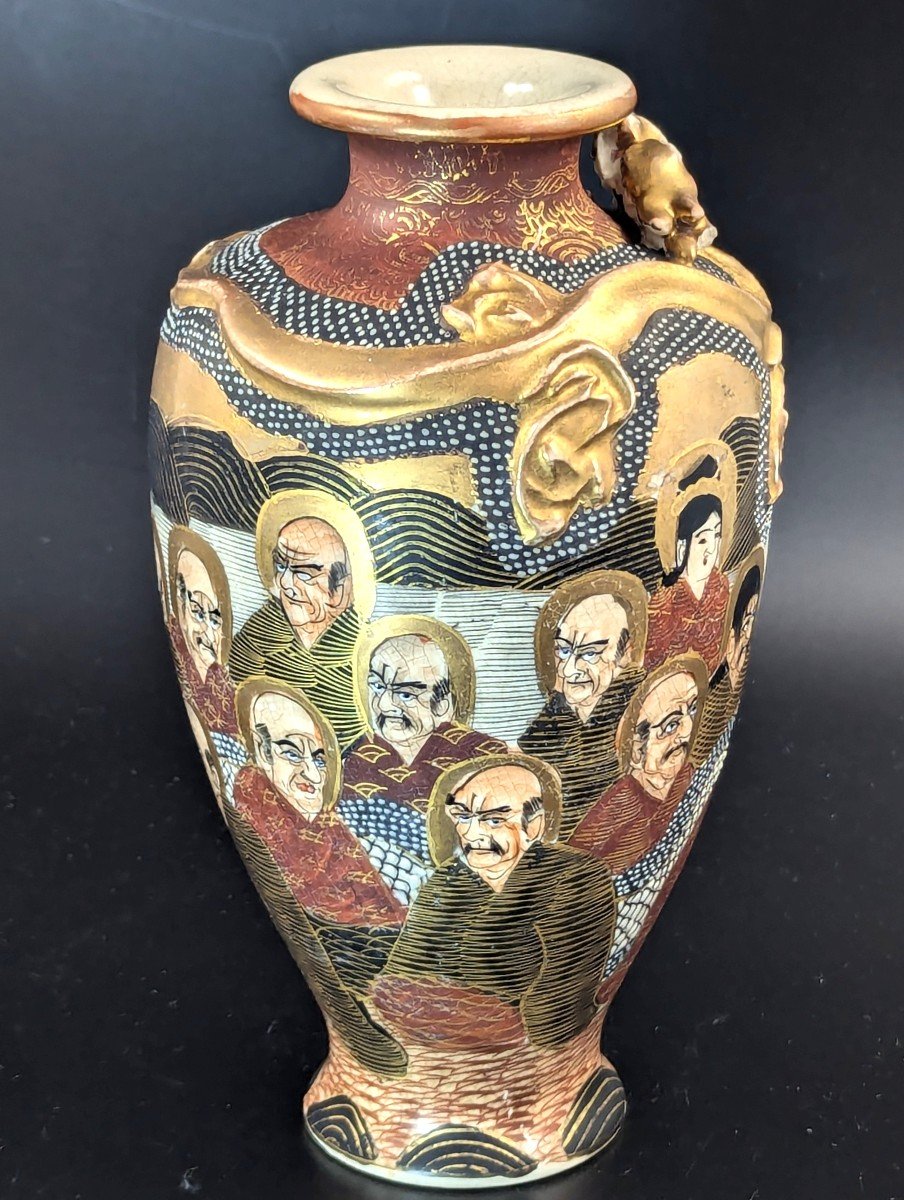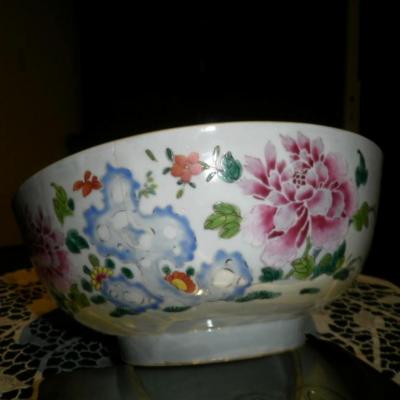"Antique Satsuma Vase “1000 Faces”, Japan, Meiji Period "
This antique and rare hand-painted earthenware vase, decorated in the "1000 Faces" pattern with dragons, is a beautiful example of late 19th-century Satsuma craftsmanship. The vase features intricate depictions of Buddhist monks, accompanied by a striking black and grey speckled dragon that winds its way from the top to the base. Another gilded dragon, more ornate, wraps around the neck of the vase, adding to the richness of the design. The vase is further adorned with detailed gilded patterns, showcasing the elaborate artistry typical of Satsuma ware. Marks on the base, along with the Shimazu clan crest, indicate the vase’s authenticity, as the Shimazu family historically patronized and controlled the production of Satsuma pottery. The Satsuma style of pottery originated on the island of Kyushu in the early 18th century and quickly gained popularity. By the second half of the century, production had expanded to Awata, near Kyoto. In the 19th century, Satsuma ware became known internationally, and pieces like this vase, often decorated with scenes of geishas, samurai, or Buddhist monks, were created for export to the West. The distinctive features of Satsuma pottery include its light, porous terracotta body and the use of a feldspathic glaze mixed with wood ash, creating a unique texture and appearance. The hallmark of Satsuma ware is its rich, often exaggerated, decoration in polychrome and gold glazes. Gold is a dominant motif, along with vibrant colors such as green, red, turquoise, pink, and the highly prized gosu blue—a dark, thick glaze that was especially favored in high-quality 19th-century Satsuma pieces. The meticulous craftsmanship and lavish ornamentation make this vase a rare and valuable collector's item, embodying the artistic and cultural heritage of Satsuma pottery during the Meiji era. Today, Satsuma ware is still produced in Kagoshima and other parts of Japan. While traditional designs remain popular, modern Satsuma ceramics often incorporate contemporary themes and techniques, continuing the legacy of intricate designs and exquisite craftsmanship.
Dimensions: height 18, 5 cm, diameter in the wide part of 10 cm, weight 462 grams.
Condition: the dragon chipped off a piece of one horn, the gilding on the head of the dragon was coming off, in the neck of the vase inside a small firing defect - visible on the photo, otherwise everything is excellent.
Please, study the accompanying photographs carefully as they form an integral part of this description. The item will be shipped with full tracking and insurance. It is important to note that shipping costs include labour, packaging and postage.














































 Le Magazine de PROANTIC
Le Magazine de PROANTIC TRÉSORS Magazine
TRÉSORS Magazine Rivista Artiquariato
Rivista Artiquariato